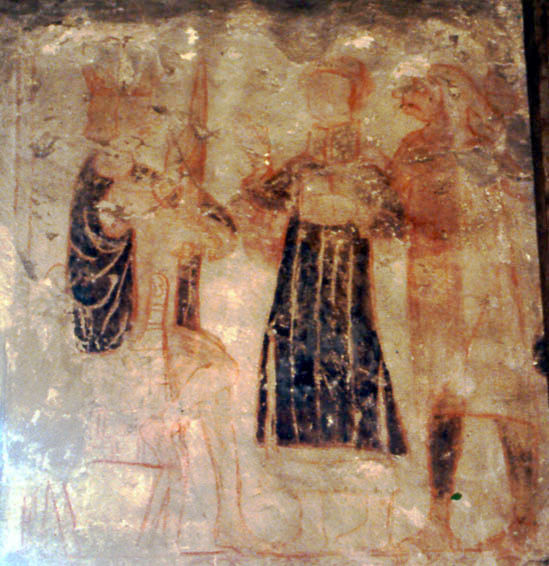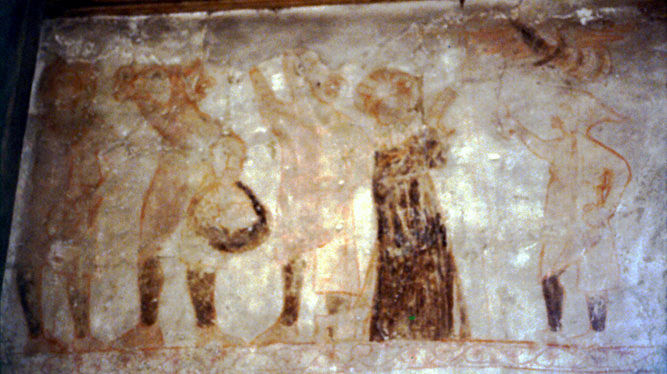North Stoke, Oxfordshire (†Oxford) c.1300
The Martyrdom of St Stephen

This painting, from the north wall at North Stoke, is one of the clearest in the church, although it is high in the top tier of paintings and thus difficult to see. Few representations of Stephen’s story (in Acts 6-7) remain, and this is in all likelihood the clearest in the English parish church. This particular incident is very competently painted indeed.
At the left is the the High Priest of the Jerusalem temple council, before whom Stephen was called to answer for blasphemy. He wears some kind of crown-like headgear and his crossed legs mark him out as a tyrant or persecutor. Stephen, his hand raised to signify speech, stands further right, wearing the high-collared dalmatic appropriate to a deacon, and holding a book. Beyond him at the right stands a guard wearing a pointed hood, but it is impossible to be sure whether this man’s apparently dog-like face is simply a result of wear and tear over the centuries or a deliberate attempt to present him as brutally grotesque like his fellow in the second painting below.

Stephen’s long address to the Council inflamed matters further, and he was cast out of the city and stoned to death. The scene of his stoning at North Stoke is less clear, but it is shown here at the right. The left side of this second scene shows three of the mob responsible for Stephen’s death, with the man second from the left holding a basket of stones. Stephen himself, identifiable by his dark dalmatic, stands right of centre, his arm extended towards an angel, its wing faintly visible at the top edge of the painting, about to take his soul to Heaven. At the far right, a stone in each hand, stands another man with exaggeratedly grotesque features and a closely fitting pointed hood. This is typical of torturer’s garb and physiognomy in wall paintings of this period, and there are a number of comparable examples on this site – the Passion Cycle at Great Tew, also in Oxfordhire and contemporary with these paintings, is one such.
A fragmentary Doom and a few other paintings are still visible at North Stoke, and I will try to add these to the site at a future update. The Murder of Thomas Becket is already here, as is the newly added Passion Cycle.